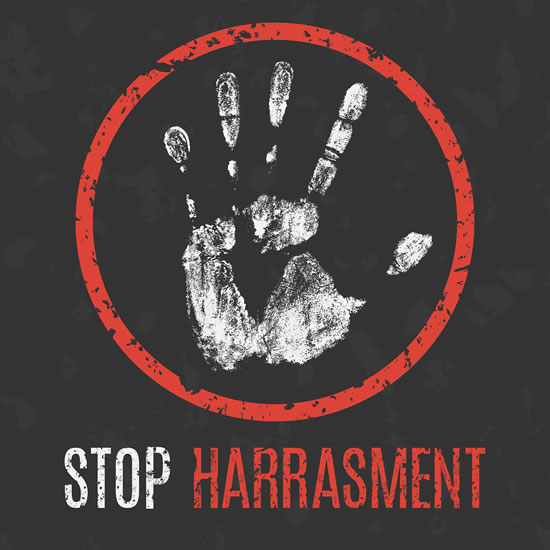Under the Fair Employment Law, harassment in the workplace may be illegal under two circumstances. The first is when an employer, supervisor or co-worker singles a person out for harassment because of that person’s race, color, creed, ancestry, national origin, age (40 and up), disability, sex, arrest or conviction record, marital status, sexual orientation or military services. The second situation is when the content of the harassment itself relates directly to any of these protected characteristics (i.e. sexual harassment, use of derogatory ethnic or religious terms, age or disability related comments, etc.)

There are many different types of workplace harassment; it can be verbal or physical behaviors. Bullying at work, whether the behavior is being exhibited by a co-worker, supervisor or someone from the upper management staff, can create a hostile, intimidating environment for anyone involved.
Broadly speaking there are three kinds of harassment one can find at their workplaces: – Written/ Physical/ Visual.
Industrialization is at its peak in India, everyone is rushing to work in the corporate world. But, is this so charming look-a-like atmosphere of these Multinational firms really suitable for everyone? Let’s dig lil deep into the arousing topic of the darker phase of work culture in industries.
Gender inequality, as a concept, is firmly rooted in our Indian society, and it would be naive to assume that concrete buildings and lavish complexes will be invincible to this practice.
Yes, you read it right, those glass covered offices, those fancy cubicles, those air conditioned meeting rooms they all seem so pleasing while standing and watching from a distance. But, have you ever went a step forward and asked the people working there whether they also all find these glittery looking stuff around them still possessing the same charm by which you look onto them?
In a 2010 survey by IPSOS and Reuters, India recorded highest incidence of sexual harassment, and similar results were found by a Centre for Transforming India survey in 2010, that showed that nearly 88% of the women that were surveyed witnessed some form of workplace sexual harassment during the course of their work.

Let’s look on some examples of work harassment:
- Passing indecent comments about an employee
- disparaging physical or mental characteristic comments about an employee
- any type of racial slurs, words or phrases – no matter how mainstream the terms are
- offensive gestures or sounds
- Displaying or sharing offensive or inappropriate images, emails, notes, etc.
- inappropriate touching or physical contact, brushing against another’s body
- unwanted sexual contact or sexual advances
- any type of innuendos or veiled threats
- obscene conversations
- shouting – in private or in front of others
- over-monitoring or the deliberate overloading of work
- purposefully setting someone up to fail
- intentionally holding back the information a person needs to perform their job effectively
Some of above mentioned points are experienced by people not only in work places but outside as well. You must identify if you are feeling yourself in any of such circumstances and should contact HR or the grievance cell members of your firm.
An employee has the legal right at any time to raise the issue of work harassment without fear of reprisal. If harassment continues and it is of criminal nature, the complaint is to be fulfilled with the Police under IPC 354/509.






















